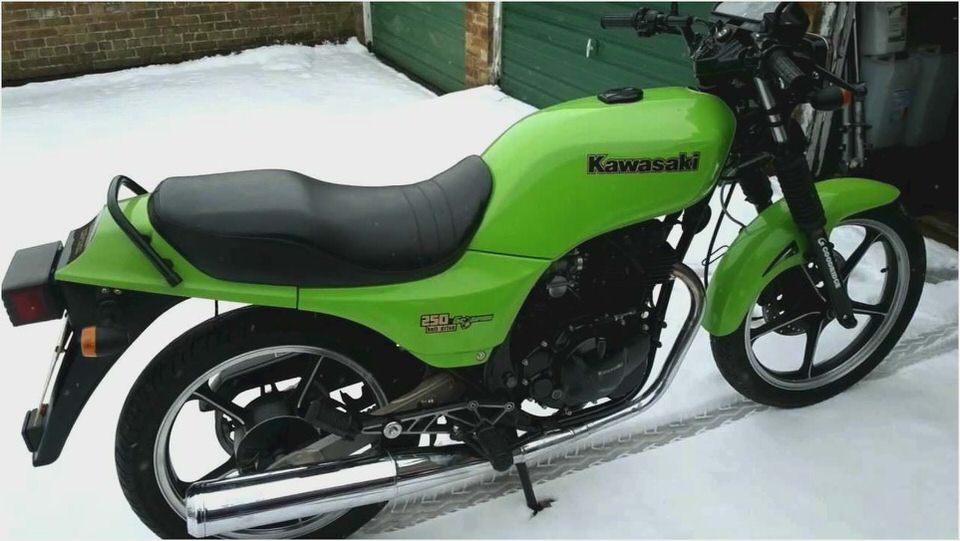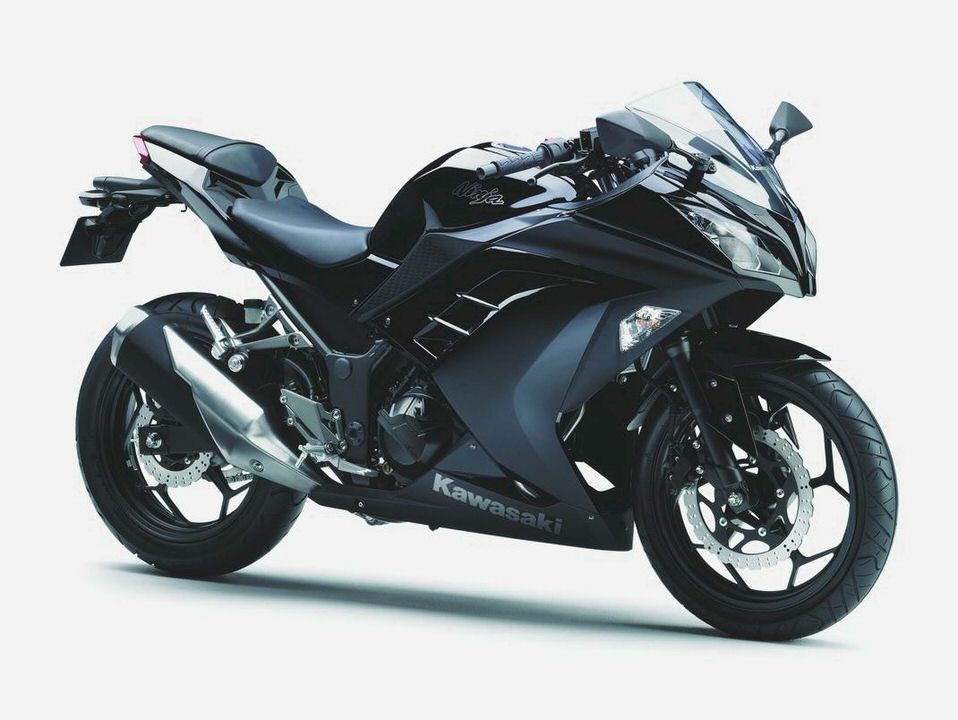Kawasaki 250 Ninja
With the removal of Kawasaki’s triple cylinder 2-strokes from the product line, the company needed a small sporty motorcycle to bring new customers into the Kawasaki community. Manufacturers had known for a long time that riders tended to stay loyal to a brand they had started on.
But the 2-stroke’s performance was a hard act to follow, and ever increasing restrictions on emissions dictated a 4-stroke which, in small engine sizes, was harder and more expensive to get the performance customers had become accustomed to.
The development of a suitable replacement goes back to 1980 in Japan (the same time as the triple cylinder 2-strokes were being phased out). The company wanted a new design that would reflect the company’s image for years to come. The new machine was to be called the Kawasaki Ninja (250R for the Japanese market) and was to be belt driven instead of the customary chain.
Early Re-Design
The new machine did not prove as popular Kawasaki had hoped and the company was forced to redesign some components, including the belt drive which got changed to a more conventional chain and sprocket system for later models. A revamped machine was released in 1986 for the Canadian and American markets; the model code was the EX250-E.
The most successful design of the 250 Ninja, however, was the model F which was released in 1988 and saw few changes for the next twenty years (mainly cosmetic). An evolution of this machine is still available from Kawasaki and is a popular first bike for many .
Riding Impressions
Riding the quarter liter Kawasaki Ninja is very different from the old three cylinder 2-strokes they ultimately replaced. The 4-stroke engine initially suffered from poor carburetor response as a result of the settings and jetting required to meet the stringent emission standards in states such as California. These machines feel strangled during hard acceleration.
The riding position is comfortable for the average size rider but on the tight side for anyone more than six feet tall. Although the bike is no lightweight (for a 250), at 304 lbs, it does feel light and responsive with quick steering, making direction changes easy and fun.
The brakes are excellent. The front dual piston caliper in particular gives a positive feel and brings the machine to a stop much faster than many more expensive bikes.
The EX250 has proven to be a reliable machine, considering its high revving (14,000 rpm) capabilities, but it does require regular checks on the carburetor synchronization (something that will help a lot with smoothing out the idle and improving the acceleration).
In addition, the primary jets are very small on these machines and are easily blocked. If the bike is to be stored for any length of time (more than one month in California, for example) the rider should add a fuel stabilizer. Typical symptoms of blocked or restricted primary jets are an engine that will not run cleanly without some choke.
Older versions are now used by many classic enthusiasts and have an excellent spare’s backup. There are also a number of aftermarket items available, including muffler and pipe systems.
An early example of the F model (1988) is valued at around $2,800 in good condition.
EX250-F Specification:
Produced from 1988 to 2007
Engine: Water cooled 4-stroke twin cylinder, with DOHC and eight valves per cylinder
Bore and Stroke: 62 x 41.2-mm (249-cc)
Compression ratio: 12.4:1

Carburation: Twin Keihin CVK30, constant velocity diaphragm type
Ignition: Electronic (plugs: NGK CR8HSA)
Transmission: 6-speed with wet multi-plate clutch and chain final drive
Frame. Tubular steel diamond type
Front Suspension: Twin hydraulic telescoping fork with 5.5” (140-mm) of travel
Rear suspension. UNI-TRAK® single-shock system with 5.1” (130-mm) of travel
Front tire: 100/80×16
Rear tire: 130/80×16
Brakes: Single rotor front and rear
Seat height: 29.3” (744-mm)
Dry weight: 304 lb’s. (138 kg.’s)

- 1993 Kawasaki ZZR 1100 Specifications eHow
- 2008 Kawasaki Concours 14 –
- PWCs A History – Jetskis – Jet Ski Lake
- Kawasaki A1-R Race Bike – Classic Motobikes – Bike Reviews
- Kawasaki Ninja ZX-6R Comparison – Motorcycle USA

